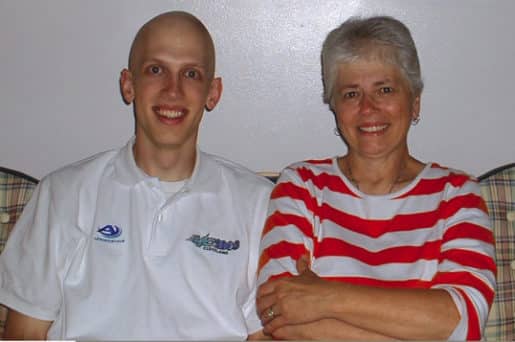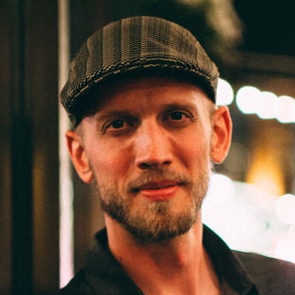The 5 supports that got me through cancer treatment
Getting support during cancer treatment is essential. But finding the right support can feel like standing in one of those lottery wind tunnels — bills zooming everywhere as you’re frantically trying to grab what you can.
When you’re diagnosed with cancer, life feels like a whirlwind — the flurry of doctors’ appointments, on top of feeling really sick while trying to figure out finances, work, living arrangements, and insurance. As a patient, you’re just trying to grab on to whomever you can to help get you through your diagnosis and treatment.
“Navigating the physical and emotional complexities of a cancer diagnosis and treatment takes a village,” says Sheetal Kircher, MD, medical director of the Cancer Survivorship Institute at Northwestern Medicine’s Lurie Cancer Center. “Supportive oncology services, such as social workers, financial counselors, nutritionists, physiologists, psychiatrists, and caregiver services can help patients and families preserve and even improve their quality of life.”
I know the value of a strong support system from experience. I was diagnosed with stage IV non-Hodgkin lymphoma shortly after graduating from college and six weeks into my new job working for the Cleveland Cavaliers basketball team. Instead of dishing dimes during some of the best after-work pick-up games I’ve ever played, my life stopped on one. There I was, completely upended, trying to grab a few of those paper bills whirring past my head.
“Navigating the physical and emotional complexities of a cancer diagnosis and treatment takes a village”
The ways that my support team coalesced happened rapidly, sometimes unexpectedly. Without them, I’m not sure I’d be here today.
1. Colleagues
I continued to work while I was in treatment, a feat that became progressively harder as time wore on. Two of my supervisors with the Cavs, public relations director Amanda Petrak and general manager Jim Paxson, protected me, letting me work when I felt up to it and go to doctors’ appointments as needed. During treatment, Jim’s wife, Amanda, was also being treated for brain cancer. Sometimes we’d end up in the hospital waiting area together before appointments. Jim and Amanda offered encouragement during treatment and acted as advocates to keep me employed with the team, even when I wasn’t operating at full strength.
Having work to do, rather than solely focusing on cancer, was incredibly beneficial for my mental well-being. I also had a community of support — Cavs staff and players, media members, and even the catering staff — who rallied around me.
2. Cancer peers
When you get cancer, especially as a young adult, you can feel like you’re the only person in the whole world who has it. I found that shared experiences transcended the loneliness and isolation.
I connected with Joe, a lymphoma survivor, through the Leukemia & Lymphoma Society’s peer support program.
We swapped stories about our treatment protocols, the gross side effects from chemo, and our fears of facing a life-threatening illness.
When I experienced an unnatural and uncomfortable pulling in my chest after the second round of chemo, I called Joe before anyone else, looking for reassurance that what I was experiencing was normal, which it turned out to be. Cancer buddies are invaluable.
3. Mom
I threw up a lot during treatment and in the subsequent days. It was a rough go. Staying hydrated was a challenge. I became pale, thin, and weak.

Enter: Caren, my mom. She went into full caretaker mode, going with me to every treatment and doctor’s appointment, cooking meals for me when I could eat, and walking with me so I could stay as active as possible. She introduced me to yoga and, after I stopped treatment, altered her diet and the way she cooked to support my desire to live a healthier lifestyle.
My mom walked every step of the journey with me. Eleven years later, when the script flipped and she was diagnosed with glioblastoma, I became her caretaker.
4. Friends
Because treatments were exhausting and physically demanding, the last thing I often wanted to do was talk with well-meaning friends and explain to them just how exhausted I was. I didn’t have the bandwidth.
Gabe Thompson, a college running buddy, and Dick Figge, my German professor, became two of my closest confidants. They also acted as my cancer mouthpieces, who let my broader friend group know how treatments were going and how I was doing, sparing me from spending the energy to do it myself.
5. Strangers
I didn’t feel like my normal physical self during treatment, and afterward, in the haze of remission, the reality of having cancer really sank in mentally and emotionally. Even as my hair grew back and I gained some of the weight I had lost, I felt as if I had an indelible stamp on my forehead that said, “Cancer Patient.” Dealing with cancer head-on has its benefits. But leading with cancer in every encounter has its drawbacks, too.
Going back to the hardwood with a random group of guys who had no idea about my diagnosis let me prove to myself that I was strong enough to play basketball. When I was setting picks or pulling up for some silky spot-up jumpers, I didn’t have to tell the guy passing to me that I had cancer seven months ago. I was just another player on the court, which helped me regain a new sense of normalcy post-cancer. It ends up, some of the best cancer supports don’t even know they’re supporting you.
Originally published in the Fall 2022/Winter 2023 print issue.

Dan Dean is a writer, cancer survivor, and founder of Cancer Dudes, which supports men after being diagnosed with cancer.












